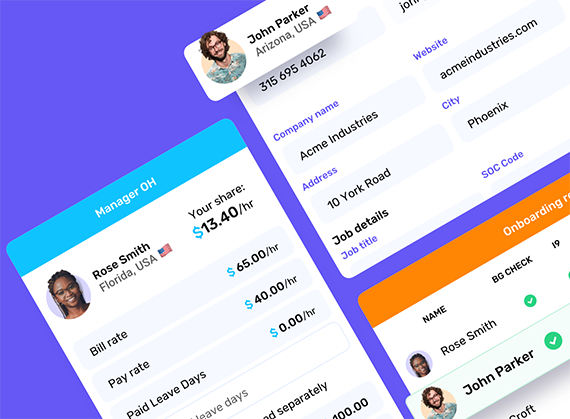Workplace productivity should always be top of mind for any successful organization. The most successful firms find a way to track worker productivity and its direct impact on the bottom line. Consistently, the companies that fail to produce also fail to have a yardstick in place for their workers to reach. Here are some important ways to measure your back-office productivity to consider for the future of your company.
Top KPIs for the Back Office
Key performance indicators, or KPIs, are designed to measure back-office performance. The tools companies use could be highly sophisticated software or simple Excel spreadsheets, but they all have one thing in common: They establish meaningful benchmarks and track individual employees and teams in their efforts to reach these goals.
We’ve found three of the best KPIs in a back-office setting include:
- Resolution times—The resolution time depends on the particular back-office function you’re tracking. For example, recruiting or HR could track time-to-hire. Customer service could track the average queue time of incoming calls. The point is that someone is measuring how problems are fixed, how quickly they’re fixed, and whether that time is decreasing.
- Customer satisfaction—There is perhaps no better measurement that impacts your bottom line. Keep in mind that the idea of “customer” could encompass a variety of stakeholders with the organization (such as your employees) or paying customers who purchase your products. The point is that someone is paying attention to internal and external customers, measuring your interactions, and striving to improve them.
- Processing times—This could be a human or a paper metric. For example, tracking how long it takes to process incoming invoices by the accounting team, or the number of resumes reviewed that led to a good candidate, are ways to track activity versus return. Since time is money, it makes sense to pay attention to how long it takes to complete an activity within a specific workflow. Then you can assess the activity workflow for efficiency and rate of return.
One of the most commonly outsourced processes in the back-office is the employee function. Your go-to payroll or employment partner should follow and enhance these and other KPIs to ensure both your internal and external teams are working well together. How can an agency of record help you reach your back-office goals?
How Can an Employer of Record Improve Back-Office Efficiency?
Employer of record firms add value by taking unwieldy tasks off the hands of overburdened HR teams. These companies already run their back-office functions, working with multiple vendors for insurance payroll, time and labor, onboarding, and more. By adding this type of agency to your team, you can eliminate many of the redundant labor and workflows you have in place in all of these areas. Consolidating your back-office functions through FoxHire requires you to work with just one vendor, saving you time and money.
FoxHire helps improve the KPIs of organizations just like yours. Our track record of service ensures you will improve resolution time for filling open positions, increase candidate and employee satisfaction, and increase the overall efficiency of your hiring process. Talk with our team today to improve your back-office efficiencies.






